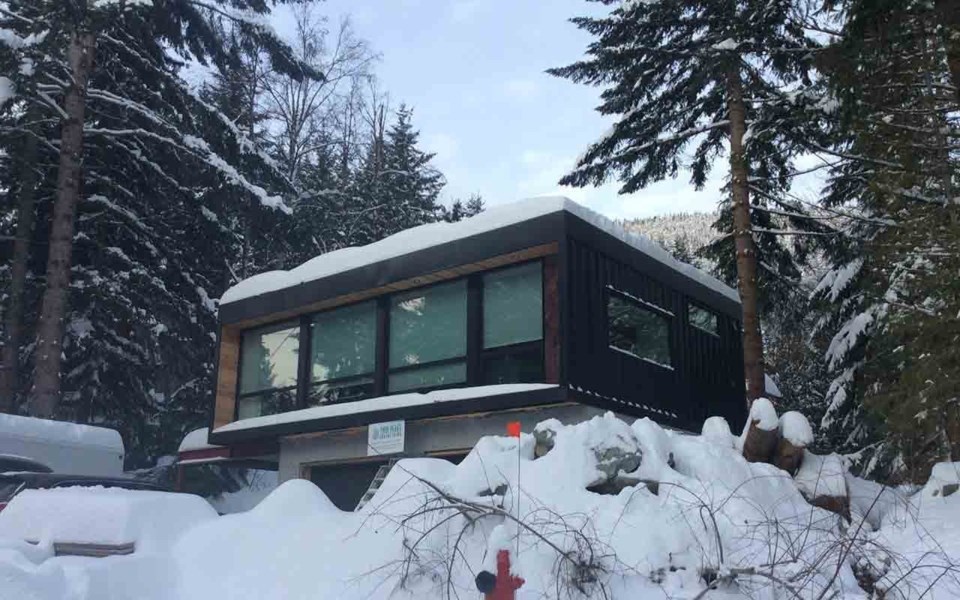In the lead-up to the recent federal election, the BC Real Estate Association (BCREA) called on Canada’s newly elected government to begin seriously looking at housing policy through a climate lens, two issues that have historically been treated separately.
Given the realities of a place like Whistler, what with its longstanding housing shortage and inherent connection to nature, the two issues are inextricably linked. That’s why the BCREA is pushing for policies that would create more “missing middle housing” through gentle densification as one piece of the puzzle. Specifically, its recommendation is to make better use of residentially zoned land located close to existing community amenities and infrastructure by densifying single-family-home lots with three, four or five units on the same plot.
“The solution for housing is not to just build 10-storey high-rise towers with one-bedroom units and it’s not to just build 500 new single-family units further up the road towards Pemberton,” said BCREA’s advocacy projects manager Mark Sakai. “The solution is to look at creative ways and create options for different groups of people who are underhoused in well-located areas.”
The billion-dollar question then, is, given the steep value of land here, the emphasis on green space and views, and the proliferation of second-homeowners who may not be as keen as permanent residents to subdivide their lots, does Whistler have an appetite for this kind of strategy?
“I think there is,” said Councillor Jen Ford, board chair of the Whistler Housing Authority (WHA). “When the Mayor’s Task Force on Resident Housing was giving their recommendations, one of the things was to bring back the infill housing policy from Alpine and applying that to other neighbourhoods and making that more accessible to other property owners. That was a statement that said we want the market to bring this housing online as well. WHA can’t do it all. [The Whistler 2020 Development Corporation] can’t do it all. We need everyone to do this.”
Formed in 2016, the task force came back two years later with an extensive report that listed a number of recommendations aimed at addressing Whistler’s housing shortage, including increasing densification in single-family neighbourhoods that would ideally “address the loss of market homes historically more available to locals for rental and ownership and provide the opportunity for existing owners to stay in the community and ‘age in place,’ while releasing equity in their homes.”
The takeup so far, however, has been minimal, with just two infill lot splits over the years, in Alpine and Emerald. The muni has also amended zoning regulations to encourage auxiliary suites, including detached suites.
“Is it popular? Depends on who you ask,” Ford said. “But I think there are other communities larger than ours making bold moves with their policy changes, such as upzoning all properties to multi-family and doing away with the idea of a single-family home in a large lot.”
With tales of seasonal workers crammed into bedrooms, attics and hallways not uncommon in the winter, Sakai said Whistler in some ways has already adopted a densification approach.
“What you need to do is create a system where a proper type of housing structure is allowed and incentivized so that it’s not like you have people sleeping in hallways or on the floor in bedrooms,” he said. “If you were able to build these types of units, particularly in a place like Whistler, you’re going to be building new buildings that are intended to be energy-efficient, better insulated, with more efficient heating systems, better air quality and all those things. You’re also hitting a number of intended outcomes for housing in addition to providing proper housing for an underserved group.”
Key to those incentives, Sakai said, is streamlining the zoning and permit approval processes, which have been severely hampered in Whistler due to a confluence of factors, including staff shortages at municipal hall, April’s cyber attack handcuffing the RMOW’s digital services, and an unprecedented, pandemic-fuelled renovation boom. Part of the Liberals’ election platform, for instance, is to create funding incentives for local governments to develop electronic permit processing—the RMOW is hopeful to move to a completely digital permit approval process in the next two years—as well as streamlining approvals for priority housing.
“They can certainly work towards implementing some of these policies to encourage denser housing, and I don’t have a problem with that, per se, but it needs to be done thoughtfully,” said Chris Addario, president of the Sea to Sky chapter of the Canadian Home Builders Association. “You have existing stakeholders that have purchased property under certain expectations, and now if you’re going to change the bar, change those expectations, that’s going to be a complicated matter to deal with. I think in general it could be a positive thing if they were to go about it thoughtfully.”
Like so much in the era of COVID-19, Ford said there has been a shift in philosophy in Whistler towards a more fulsome approach that fulfils the spectrum of housing needs here.
“There are several non-profits that have been working really, really well together to come forward with their recommendation or their hope for the community to create … supportive housing all the way up to single-family market lots and everything in between,” she said, making specific mention of supportive housing provider, Zero Ceiling. “We do really well in certain things. We’ve got lots of WHA ownership, we’ve got lots of WHA rental. It’s never enough but it’s certainly more than other communities have. Then, how do we fill in the gaps? So transitional housing and below-market rental housing that’s produced by the market. That’s something else that can fill in some of the gaps along the spectrum.”




